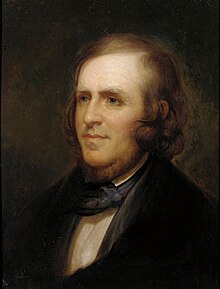The Pennsylvania Portal Pennsylvania (/ˌpɛnsɪlˈveɪniə/ , lit. 'Penn's forest country'), officially the Commonwealth of Pennsylvania (Pennsylvania Dutch: Pennsylvanie), is a landlocked state spanning the Mid-Atlantic, Northeastern, Appalachian, and Great Lakes regions of the United States. Pennsylvania borders Delaware to its southeast, Maryland to its south, West Virginia to its southwest, Ohio and the Ohio River to its west, Lake Erie and New York to its north, the Delaware River and New Jersey to its east, and the Canadian province of Ontario to its northwest. Pennsylvania was founded in 1681 through a royal land grant to William Penn, the son of the state's namesake. Prior to that, between 1638 and 1655, a southeast portion of the state was part of New Sweden, a Swedish Empire colony. Established as a haven for religious and political tolerance, the colonial-era Province of Pennsylvania was known for its relatively peaceful relations with native tribes, innovative government system, and religious pluralism. Pennsylvania played a vital and historic role in the American Revolution and the ultimately successful quest for independence from the British Empire, hosting the First and Second Continental Congress, leading to the adoption of the Declaration of Independence and the formation of the Continental Army. On December 12, 1787, Pennsylvania became the second state to ratify the U.S. Constitution. The bloodiest battle of the American Civil War, at Gettysburg over three days in July 1863, proved the war's turning point, leading to the Union's preservation. Throughout the late 19th and 20th centuries, the state's manufacturing-based economy contributed to the development of much of the nation's early infrastructure, including key bridges, skyscrapers, and military hardware used in U.S.-led victories in World War I, World War II, and the Cold War. Pennsylvania's geography is highly diverse. The Appalachian Mountains run through the center of the state; the Allegheny and Pocono mountains span much of Northeastern Pennsylvania; close to 60% of the state is forested. While it has no ocean shoreline, it has 140 miles (225 km) of waterfront along Lake Erie and the tidal Delaware River. (Full article...) This is a Featured article, which represents some of the best content on English Wikipedia..
Benjamin Franklin Peale (born Aldrovand Peale; October 15, 1795 – May 5, 1870) was an American officer of the Philadelphia Mint from 1833 to 1854. Although Peale introduced many innovations to the Mint of the United States, he was eventually dismissed amid allegations he had used his position for personal gain. Peale was a son of painter Charles Willson Peale, and was born in the Philadelphia Museum, a museum of curiosities which his father ran in Philadelphia. For the most part, Franklin Peale's education was informal, though he took some classes at the University of Pennsylvania. He became adept in machine making. In 1820, he became an assistant to his father at the museum, and managed it after Charles Peale's death in 1827. (Full article...)Selected geography article -Plunketts Creek is an approximately 6.2-mile-long (10 km) tributary of Loyalsock Creek in Lycoming and Sullivan counties in the U.S. state of Pennsylvania. Two unincorporated villages and a hamlet are on the creek, and its watershed drains 23.6 square miles (61 km2) in parts of five townships. The creek is a part of the Chesapeake Bay drainage basin via Loyalsock Creek and the West Branch Susquehanna and Susquehanna Rivers. Plunketts Creek's name comes from the first owner of the land including the creek's mouth, and the creek has given its name to two townships (although one has since changed its name). The creek flows southwest and then south through the dissected Allegheny Plateau, through rock from the Mississippian sub-period and Devonian period. Much of the Plunketts Creek valley is composed of various glacial deposits, chiefly alluvium. (Full article...)Selected image -Did you know -
Related portalsWikiprojectsThis is a Good article, an article that meets a core set of high editorial standards.
Gaylussacia brachycera, commonly known as box huckleberry or box-leaved whortleberry, is a low North American shrub related to the blueberry and the other huckleberries. It is native to the east-central United States (Pennsylvania, Delaware, Maryland, Virginia, West Virginia, North Carolina, Kentucky, and Tennessee). Gaylussacia brachycera is easily distinguished from other members of its genus by its leaves: they resemble those of boxwood (hence its name) and lack the resin glands typical of huckleberries. Like its relatives, it bears white urn-shaped flowers in the early summer, which develop to blue, edible berries in late summer. It is mostly found in Appalachia; many of its stands there were known to natives, who picked and ate the berries, before botanists became aware of them in the 1920s. (Full article...)Selected article -Interstate 95 (I-95) is a major north–south Interstate Highway that runs along the East Coast of the United States from Miami, Florida, north to the Canada–United States border at Houlton, Maine. In the state of Pennsylvania, it runs 51.00 miles (82.08 km) from the Delaware state line near Marcus Hook in Delaware County in the southeastern part of the state northeast to the Delaware River–Turnpike Toll Bridge at the New Jersey state line near Bristol in Bucks County, closely paralleling the New Jersey state line for its entire length through Pennsylvania. From the Delaware state line north to exit 40, the route is known by many as the Delaware Expressway but is officially named the Vietnam Veterans Memorial Highway. North of exit 40, I-95 follows the easternmost portion of the Pennsylvania Turnpike; this portion of road is not signed as part of the turnpike. I-95 parallels its namesake Delaware River for its entire route through the city of Philadelphia and its suburbs. It is a major route through the city and the Delaware Valley metropolitan area, providing access to locally important landmarks such as Subaru Park, Philadelphia International Airport, the South Philadelphia Sports Complex, Penn's Landing, and Philadelphia Mills. (Full article...)Pennsylvania news
CategoriesState factsState Facts
State symbols
Pennsylvania topicsGeneral imagesThe following are images from various Pennsylvania-related articles on Wikipedia.
Associated WikimediaThe following Wikimedia Foundation sister projects provide more on this subject:
Discover Wikipedia using portals
|
How Can We Help?




































































Recent Comments